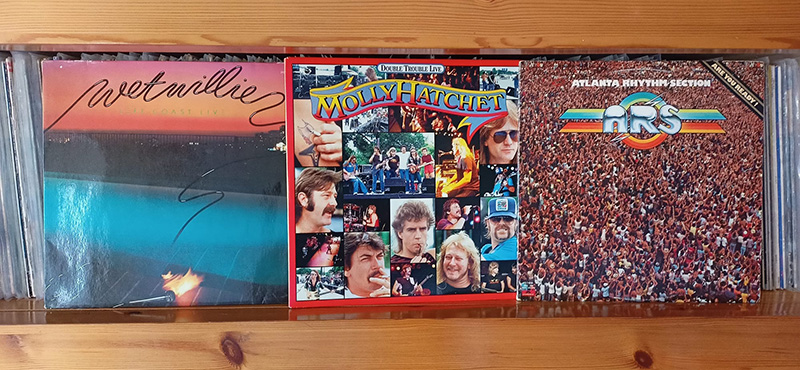El Rock and Roll emana del Sur. Un excitante y primitivo sonido que hunde sus raíces en el Blues, el Country y el R&B, tres paradigmas de música auténtica y sincera que surgen desde las llanuras de Texas hasta las montañas de Virginia, pasando por los pantanos de Louisiana y las aguas del Mississippi. Es en este lugar donde a finales de la década de 1960 un grupo de jóvenes músicos que comparten un mismo ideario sonoro y vital, orgullosos de su herencia e identidad, pero decididos a desencadenar un cambio tanto a nivel musical como social, concebirán un nuevo género que extenderá su influencia hasta nuestros días: el Southern Rock.
Rock and Roll was born in the South. Its sound is exciting and primitive, and is deep-rooted in Blues, Country and R&B – three paradigms of real, honest-to-goodness music that cropped up from the plains of Texas to the Virginia mountains, from the swamps of Louisiana to the Mississippi. The South in the late 1960s was also where a group of young musicians who shared the same system of beliefs about sound and life (proud of their heritage and identity, while determined to unleash a change both on a musical and social level), would come up with a new genre that would extend its influence to this day: Southern Rock.
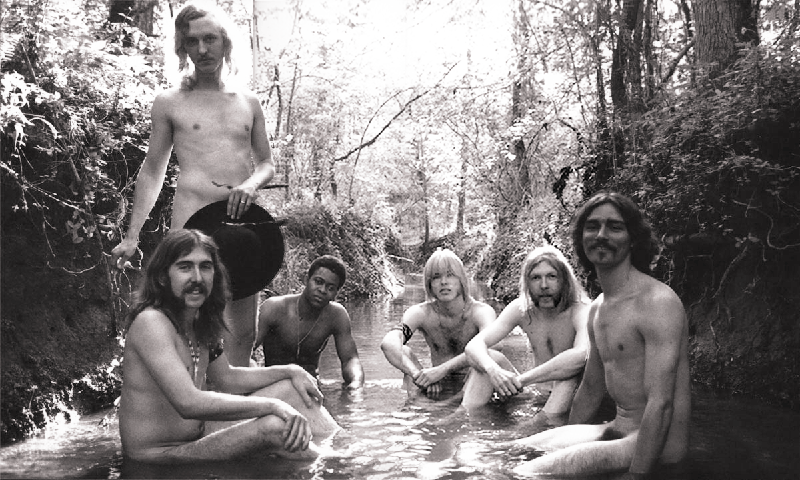
A pesar de que algunos de sus protagonistas no comulgan con este término por parecerles comercial o redundante (ya que afirman que simplemente “hacían Rock en el Sur”), no podemos negar la existencia de varios factores que ayudan a definir y enmarcar esta nueva variante del Rock and Roll: es producto de un sitio concreto en un momento determinado, todas las bandas implicadas comparten idénticas influencias y raíces, e interaccionan usualmente formando una comunidad artística con un alto sentido de camaradería y hermandad. La mezcla de estas tres características dará como resultado la concepción de unos nuevos patrones sonoros que incorporarán con total naturalidad innovadores esquemas rítmicos y solistas totalmente reconocibles para los aficionados y seguidores del Southern Rock (Rock Sureño es su traducción al castellano).
Despite the fact that some of its leading figures don’t exactly agree on the term, finding it too commercial or redundant (affirming that they simply “played Rock in the South”), we cannot deny the existence of several factors that helped define and label this new variant of Rock and Roll: it is the outcome of a specific place at a certain time, all the bands involved share identical influences and roots, and they usually interact by creating an artistic community with a high sense of camaraderie and brotherhood. The combination of these three features turned into the conception of new sound patterns that would include inherently innovative rhythmic and solo schemes that are easily recognizable to fans and followers of Southern Rock.
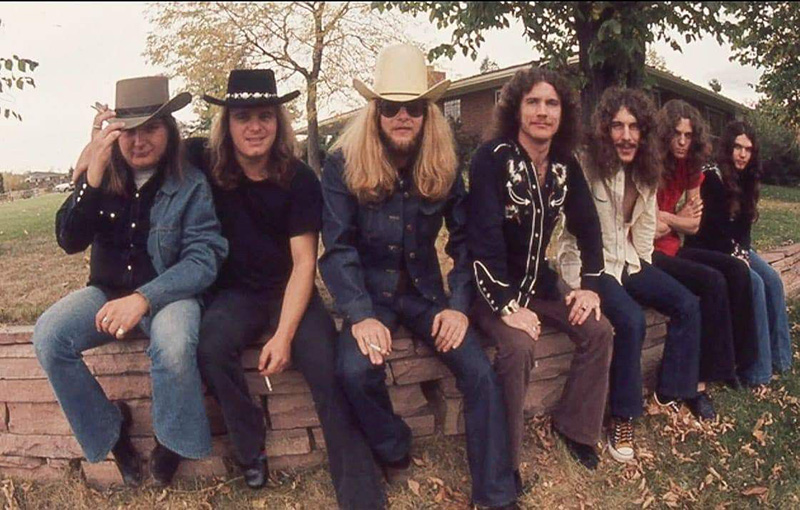
El halo trágico que tristemente siempre acompañó a las principales formaciones sureñas ha hecho que con el paso del tiempo figuras como las de Duane Allman o Ronnie Van Zant hayan mutado en leyenda no solo en su país de origen, sino en el mundo entero. La muerte siempre rondó a estos conjuntos en que eran habituales los lazos familiares, pero gracias al alto grado de fraternidad y solidaridad existente entre todos ellos pudieron superar todas las adversidades que encontraron en el camino. La aparición en 1969 del homónimo primer álbum de The Allman Brothers Band supuso un auténtico Big Bang que impulsó a miles de chavales a formar su propia banda reexaminando tradiciones y desafiando reglas establecidas.
The tragic halo that seemed to sadly be forever linked with the main southern groups has eventually turned figures such as Duane Allman or Ronnie Van Zant into legends, not only in their home country, but also throughout the world. Death has always haunted these groups, in which close-knit family ties were the norm. But, thanks to their seemingly sacred brotherhood and kinship, they were able to overcome the adversities they came across along the way. The release of The Allman Brothers Band’s first eponymous album in 1969 was a game changer, prompting thousands of teenagers all over the place to start their own groups, reexamining traditions and defying previously-established rules.
Este disco de debut puso en el mapa un irrepetible movimiento que tuvo su auge a mediados de la década de 1970’s, con un presidente sureño en la Casa Blanca y el Southern Rock dominando las ventas de discos, las ondas radiofónicas y llenando estadios por todo el país. El accidente aéreo que sufrieron los Lynyrd Skynyrd (el otro gran referente del género) el 20 de octubre de 1977 ,en el cual murieron su cantante y líder Ronnie Van Zant, los hermanos Steve (guitarrista) y Cassie Gaines (corista) y el mánager Dean Kilpatrick y en que los restantes miembros sufrieron heridas de gravedad significó el principio del fin. La bancarrota de Capricorn (principal e impulsor sello del género), la irrupción de la música disco y el AOR (Adult Oriented Rock) y el cambio de gustos del publico americano en general tocaron de muerte a un estilo que alargó su agonía hasta 1981 con la aparición de la última y genuina gran banda sureña, Doc Holliday.
This debut album put an unrepeatable movement on the map that would peak in the mid-70s with a southern president in the White House and Southern Rock ruling the record sales and airwaves, while it filled stadiums across the country. The fatal moment that plane went down, killing Lynyrd Skynyrd (the other big name in the genre) singer and leader Ronnie Van Zant, brothers Steve (guitarist) and Cassie Gaines (backup singer) and manager Dean Kilpatrick on October 20th 1977, seriously injuring the remaining members, was the beginning of the end. The bankruptcy of Capricorn (the main driving force behind the genre), the arrival of disco music and AOR (Adult Oriented Rock), as well as the American public’s sudden change in taste in general, were all fatal blows to a style that had basically prolonged its agony through to 1981 with the appearance of the last and genuine great southern band, Doc Holliday.
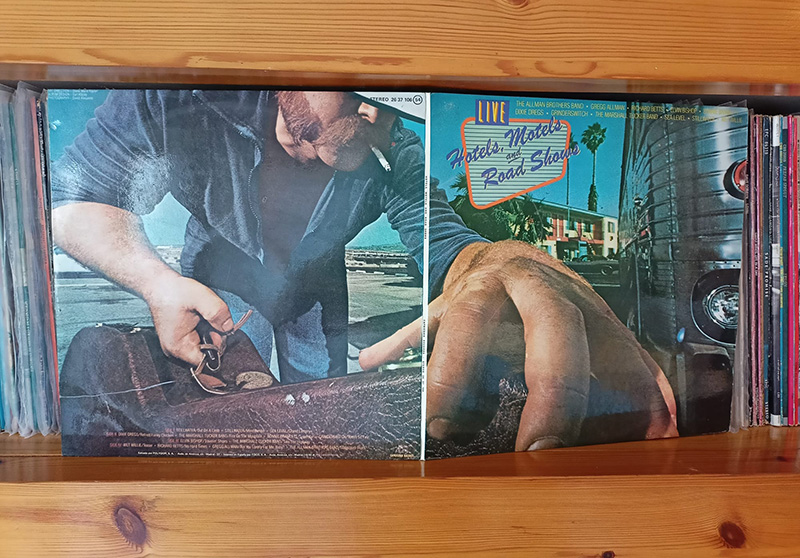
Los 80’s fueron una autentica travesía del desierto, con algunas bandas aguantando el tipo entregando discos dignos y respetables y otras que cayeron en los brazos de los sonidos mainstream imperantes en la época. Alentados por la aparición de nuevos grupos que reivindican el legado sureño y la autenticidad y sinceridad de su música a finales del decenio The Allman Brothers y Lynyrd Skynyrd regresan por todo lo alto, y en 1991 Phil Walden relanza Capricorn desde Nashville. Pero hoy en día se abusa demasiado del término Southern Rock . Estos nuevos conjuntos no pueden ser catalogados como tal ya que tienen distintas influencias que los “clásicos” y no existe una escena consistente y cohesionada . Aunque muchos de los problemas raciales y sociales que se encontraron los adolescentes de la época aún existen en la América del siglo XXI el singular marco histórico y colectivo de los 60’s fue el perfecto caldo de cultivo para la creación de un género musical tan singular como irrepetible….
The ‘80s were basically a trek across the desert. Some bands tried to hold out, putting out decent, respectable albums, while others fell into the enticing mainstream embrace that was so prevalent at the time. Prompted and emboldened by the appearance of new groups claiming the southern legacy and the authenticity and honesty of their music at the end of the decade, The Allman Brothers and Lynyrd Skynyrd returned, and in all their splendor. Even Capricorn made a comeback in 1991, thanks to Phil Walden in Nashville. But still, the term ‘Southern Rock’ is overused today. These new groups can’t be labeled as such since they weren’t influenced by the “classics”, not to mention the fact that today a consistent and cohesive scene doesn’t even really exist. Although many of the racial and social problems that the teens of those days had to endure still exist in 21st century America, the unique historical and collective framework of the ‘60s was the perfect breeding ground for the creation of a musical genre that is as remarkable as it is unrepeatable.
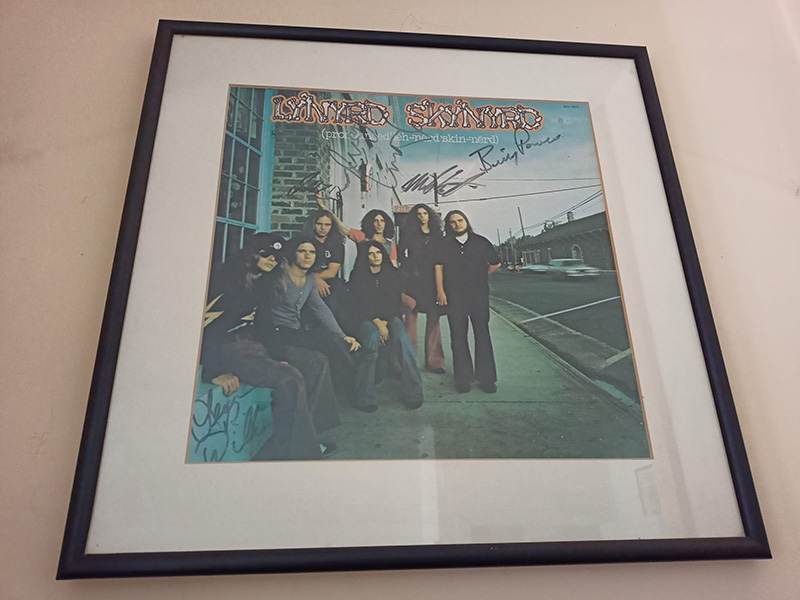
El Sur de los Estados Unidos, ese territorio tan fascinante como contradictorio e imprevisible, continúa siendo un enigma para el resto del país. La herencia cultural e histórica que dejaron los primeros colonos británicos y posteriormente franceses, españoles y los esclavos africanos proporcionaron a la región un intangible elemento mágico, místico, que se ha traducido con el tiempo en unas costumbres, dialecto, cultura y gastronomía inconfundiblemente intransferibles. Es en esta singular zona donde a finales de la década de 1940 nacen los protagonistas de nuestra historia: la mayoría vive en barrios interraciales, en el límite de la pobreza, y muchos serán discriminados por su aspecto, religión (los judíos) o por su clase social. A pesar de ser orgullosos habitantes del Sur, rexaminaran y redefinirán comportamientos y tradiciones. Contrariamente a la extendida creencia popular de que son racistas, la realidad es totalmente opuesta: la mayoría de ellos tienen amigos negros, tocan en bandas multirraciales y escuchan Blues. Podríamos afirmar que mucha de la gente sureña se siente más cercana a los negros del Sur que a los blancos del Norte: la diferencia no está en el color. De talante progresista y liberal, estos chicos desempeñaran en el futuro un papel fundamental en la lucha por los derechos civiles.
The ‘American South’, that land that is as fascinating as it is contradictory and unpredictable, continues to be an enigma to the rest of the country. The cultural and historical heritage left behind by the first British settlers and subsequently the French, Spanish and African slaves, left the region with an intangible magical and mystical element, transforming itself over time into unmistakably steadfast customs, dialects, culture and gastronomy. It is in this unique territory where the protagonists of our tale were born, at the end of the 1940s: mainly from interracial neighborhoods or on the brink of poverty, and many discriminated against because of their appearance, religion (especially the Jews) or social class. Despite being proud Southerners, they reexamined and redefined behaviors and traditions. Contrary to the widespread popular belief of being racists, the truth is actually the opposite: most of them have black friends, play in multiracial bands and listen to the Blues. We could even say that most southerners actually feel closer to Southern blacks than Northern whites. It actually has nothing to do with color. These boys, progressive and liberal in spirit, would end up playing a fundamental role in the fight for civil rights in the future.
Aunque en 1954 al Corte Suprema de los USA anula la segregación en las escuelas , el gran impulso que pone en marcha el movimiento por los derechos civiles ocurre el 1 de octubre de 1955, cuando una mujer negra, Rosa Parks, se negó a levantarse de su asiento en un autobús público para cedérselo a un pasajero blanco. El hecho de ser arrestada, enjuiciada y sentenciada encenderá la chispa definitiva que necesita la sociedad americana: en 1964 el congreso aprueba la “Ley de Derechos Civiles” (que a grandes trazos prohíbe la segregación racial en todo el territorio nacional), en el 65 la “Ley de Derecho al Voto” (que anula las limitaciones que algunos estados aplicaban sobre los votantes negros) y en el 68 la “Ley de Vivienda Justa”, destinada a prohibir la discriminación racial en su venta y alquiler.
Even though the U.S. Supreme Court banned segregation in schools in 1954, the real catalyst of the civil rights movement took place on October 1st, 1955, when a black woman named Rosa Parks refused to give up her seat on a public bus to a white passenger. Her arrest, trial and sentence would ignite the definitive spark that the American society needed. In fact, shortly after, in 1964, Congress approved the “Civil Rights Act” (which broadly prohibited racial segregation throughout the nation), and in ’65, the “Voting Rights Act” (which outlawed the limitations that some states were applying to black voters) and finally, in 1968 the “Fair Housing Act” was passed, prohibiting racial discrimination in the sale or rent of housing.
Precisamente los jóvenes músicos sureños serán los grandes precursores de la integración racial, ofreciendo a su país y al mundo entero una imagen de normalidad y naturalidad: grupos como Booker T. & the M.G.’s (exitoso combo de Soul con dos integrantes blancos y dos negros) , los Allman Brothers (con Jai Johanny “Jaimoe” Johanson comandando la sección rítmica ),o estudios de grabación como Muscle Shoals o FAME Studios (donde Duane trabajó con leyendas del Soul como Aretha Franklin o Wilson Pickett) serán los puntos de partida para cambiar las infames actitudes y creencias que tristemente aún sobreviven hoy en día… Como dijo uno de los mejores escritores sureños, William Faulkner, “el pasado no ha muerto: ni siquiera ha pasado”. El asesinato del reverendo Martin Luther King supuso un duro golpe para estas ansias de cambio y reconciliación, pero la determinación de estos muchachos abrirá los ojos a muchos de sus coetáneos.
In fact, young Southern musicians were actually the great precursors of racial integration, offering their country and the whole world an image of natural ‘normalcy’: groups like Booker T. & the M.G.’s (a successful Soul combo made up of two white and two black members), the Allman Brothers (with Jai Johanny “Jaimoe” Johanson heading up the rhythm section), or recording studios such as Muscle Shoals or FAME Studios (where Duane worked with Soul legends Aretha Franklin and Wilson Pickett) would become the starting blocks towards a change in the infamous attitudes and beliefs that sadly still persevere today… As one of the best Southern writers, William Faulkner, put it, “The past is never dead. It’s not even past.” The murder of Reverend Martin Luther King was a severe blow to these longings for change and reconciliation, but the determination of these boys would open the eyes of many of their contemporaries.
Estas nuevas bandas (que a diferencia de sus homólogos ingleses han mamado el Blues desde pequeños en primera persona, en la calle o en la Iglesia, como los hermanos Hall de Wet Willie) descubrirán al público blanco la música negra, y le rendirán un continuo homenaje de diversas maneras: a través de las versiones que realizan tanto en estudio como en directo, en las portadas de los álbumes (el disco más exitoso de Wet Willie, “Keep On Smilin’”, tiene en portada a una leyenda del Gospel-Blues de Macon, el músico callejero Rev. Pearly Brown), en el nombre de las bandas (The Marshall Tucker Band debe su nombre a un afinador ciego de pianos de su ciudad natal , Spartanburg) o en canciones propias (“The Ballad Of Curtis Loew” de Lynyrd Skynyrd ,es un homenaje a varios músicos del vecindario de Ronnie Van Zant).
These new bands (who, unlike their English counterparts, were raised on Blues, first-hand, on the streets or in church, just like the Hall brothers from Wet Willie) brought black music to mainly white audiences, honoring them: with their covers they performed both in the studio and in concert, on album covers (Wet Willie’s most successful album, Keep On Smilin’, features Gospel/Macon-blues legend and street musician Rev. Pearly Brown on the cover), with their band names (The Marshall Tucker Band got its name from a blind piano tuner back in their hometown of Spartanburg) or in their songs (Lynyrd Skynyrd’s “The Ballad Of Curtis Loew” is a tribute to various musicians from Ronnie Van Zant’s neighborhood).
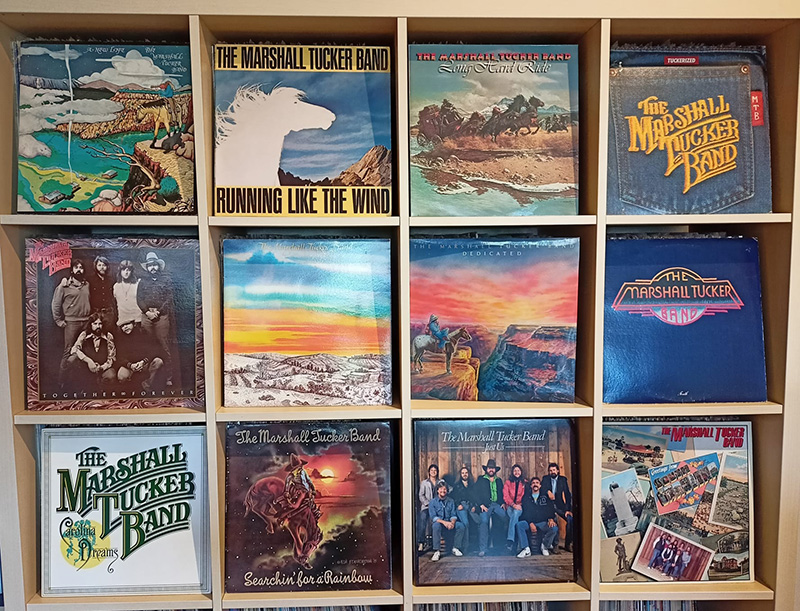
Una de las grandes polémicas que siempre acompañó al Southern Rock fue el uso de imágenes y símbolos sureños: la paradoja de mostrar la bandera confederada siempre llevó a malentendidos, ya que, aunque su utilización se debe más al orgullo de pertenecer a un lugar único que el de perpetuar viejas costumbres, para otros representa un doloroso recuerdo del pasado, al malinterpretar su uso como aprobación y respaldo a los postulados racistas confederados. En algunos casos simplemente se debía a un tema de marketing y publicidad (Según Ronnie Van Zant la idea de llevar la bandera en el escenario fue de su sello discográfico, MCA), y bandas como Lynyrd Skynyrd o Black Oak Arkansas las lucían en el escenario y hoy en día, en un mundo donde prima lo políticamente correcto, su uso es residual. Otro tema de controversia es la interpretación del antiguo himno sureño “Dixie”, aunque en este caso primaría más la importancia de la tradición oral popular que su posible trasfondo racista (hasta Bob Dylan la interpretó en directo a principios de la década de 1990 y más tarde la grabó para la banda sonora de “Masked And Anonymous” en 2003).
One of the biggest controversies haunting Southern Rock has always been the use of southern images and symbols: the paradox of displaying the Confederate flag has always led to misunderstandings, since despite being more about the pride of belonging to such a unique place and less about perpetuating old customs, for others, it represents a painful memory of the past, all leading to its misinterpretation as approval and endorsement of a racist Confederate stance. In some cases, it was simply about marketing and publicity (according to Ronnie Van Zant, the idea of carrying the flag on stage actually came from his record label, MCA), prompting bands like Lynyrd Skynyrd or Black Oak Arkansas to wear them on stage, while today, in a world where political correctness prevails, its use still lingers. Another controversy is related to the playing of the old southern hymn “Dixie”, although in this case, the importance of the popular tradition is more noteworthy than its possible racist connotations (even Bob Dylan performed it in his live shows in the early 1990s, and in 2003 he recorded it for the soundtrack for “Masked And Anonymous”).
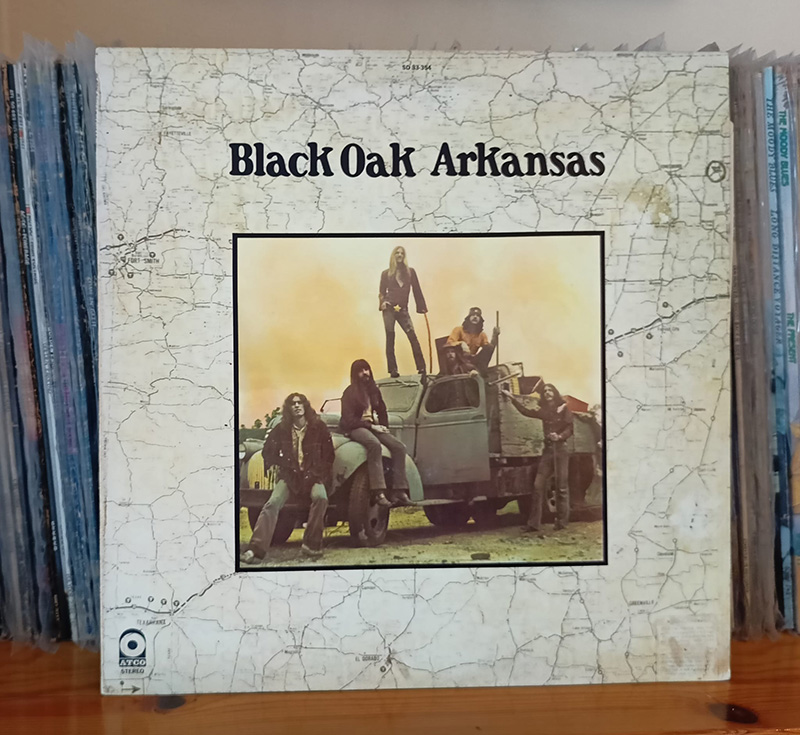
Gran parte de la sociedad estadounidense tiene una visión totalmente estereotipada de la realidad sureña: racista, intolerante, con un gran desprecio por el gobierno federal, un atajo de “rednecks” (paletos) resistentes a los cambios que son caricaturizados en las series de televisión y películas como “Deliverance” o “Easy Rider”, que contribuyen a burlas y mofas al exagerar hasta el infinito algunas actitudes reales. En parte debido a ello el Southern Rock no ha sido estudiado en profundidad hasta ahora (a diferencia de las otras músicas nacidas en el Sur), y del desprecio de parte de la crítica se ha pasado a una apasionante época con grandes tratados y ensayos de eruditos en la materia como Michael Buffalo Smith, Alan Paul o Scott B. Bomar entre otros.
Much of the American society has a competely stereotypical view of southern reality: racist, intolerant, an enormous contempt for the federal government… basically a bunch of change-resistant rednecks that are mockingly portrayed on television series and films like “Deliverance” or “Easy Rider”, contributing to the disdain and ridicule by exaggerating real attitudes to the nth degree. This is partly why Southern Rock hasn’t been studied in depth until now (unlike other Southern musical styles). The contempt on behalf of the critics has evolved these days into an exciting time full of incredible discourses and essays by scholars in the field such as Michael Buffalo Smith, Alan Paul or Scott B. Bomar, among others.
La pequeña ciudad de Macon, en Georgia, fue el epicentro del movimiento. Con los primeros éxitos de The Allman Brothers Band los directivos de las compañías discográficas recomiendan a Phil Walden que traslade su sello a New York o Los Angeles para aclimatarse a la industria, pero el capo de Capricorn fue lo suficientemente inteligente para quedarse: está decisión tendrá un impacto vital en los jóvenes sureños que se ven reflejados en sus ídolos musicales. En la era del Glam las bandas sureñas aparecen en el escenario con ropas de calle, sin parafernalias, dramatismos ni efectos escénicos.
The little town of Macon, Georgia, would become the epicenter of the movement. With The Allman Brothers Band’s first hits, record company bigwigs recommended that Phil Walden move his label to New York or Los Angeles to find his feet in the industry, but the head honcho of Capricorn was smart enough to stay: this decision would end up having a vital impact on young southerners who look to their musical idols for inspiration. Back when Glam was big, southern bands appeared on stage in street clothes, with no extra paraphernalia, drama or stage effects.
No son muy diferentes de su público, ya que visten igual, cantan sobre cosas que ven y sienten y tocan en sitios cercanos y accesibles, vuelven a lo básico cuando el oyente está ya saturado de música comercial y sobre producida, valorando el trabajo duro. Desde que la banda de los hermanos Allman realizó sus primeros conciertos unos novatos Ronnie Van Zant, Gary Rossington y Allen Collins asistían a todos sus bolos horas antes para empaparse de una magia con la que años después ellos mismos asombrarían al mundo entero. En el momento de máximo apogeo del genero (casi) todos viven en el Sur.
They weren’t very different from their fans: they dressed the same, they sang about things they saw and felt, and they played in intimate, accessible venues… They went back to the basics when the listener was tired of commercial and over-produced music, when hard work was appreciated. As soon as the Allman brothers’ band started performing live, rookies Ronnie Van Zant, Gary Rossington and Allen Collins attended all their gigs, arriving hours in advance to soak up the magic that they’d blow the entire world away with years later. At (almost) the height of the genre, everyone lived in the South.
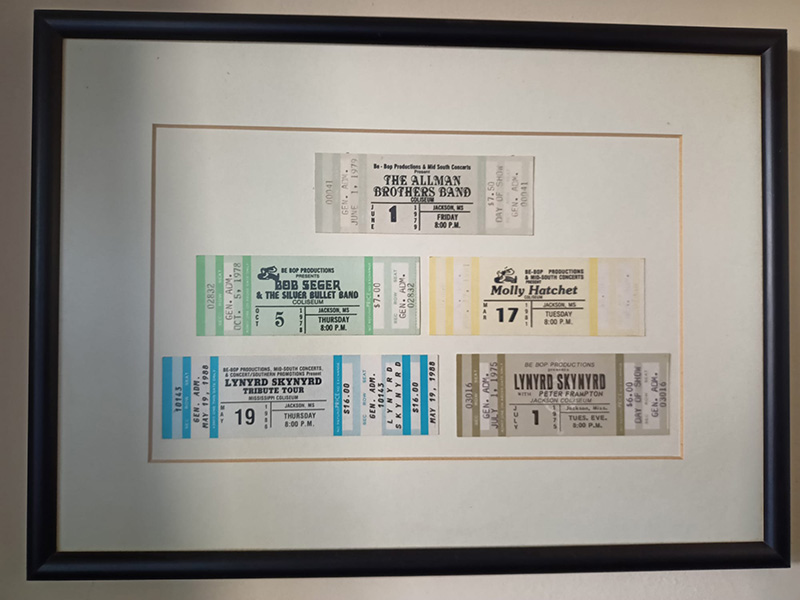
Es esta identidad regional la que creará unos lazos de camaradería y fraternidad nunca vistos en la historia del Rock. En Capricorn existía una auténtica atmosfera cooperativa. Los músicos interactuaban entre ellos y aprendían los unos de los otros. Si estabas grabando en el estudio no cerrabas las puertas, sino que las bandas se alentaban entre sí, buscando ese “feedback” que les ayudara a mejorar. Existe un sentimiento de comunidad real que tiene su máxima expresión en los famosos picnics del sello de Phil Walden, una fiesta anual que congregaba no solo a intérpretes y trabajadores de la discográfica, sino también a estrellas del “show business” y políticos como el futuro presidente Jimmy Carter.
It’s this regional identity that would go on to create the strongest bonds of camaraderie and brotherhood in the history of Rock. In Capricorn, there was a real collaborative atmosphere. The musicians interacted with each other and learned from each other. If you were recording in the studio, you didn’t close the doors; the bands encouraged each other, looking for feedback that might help them get even better. There was a sense of real ‘community’, probably best expressed in Phil Walden’s famous label picnics, the annual parties that brought together not only performers and record employees, but also show business stars and politicians like future President Jimmy Carter.
Las “Volunteer Jam” de Charlie Daniels, conciertos de carácter anual iniciados en 1974 que reunían a destacados protagonistas de la escena sureña e ilustres invitados como Ted Nugent, Billy Joel o Stevie Ray Vaughan entre muchos otros es otro claro ejemplo del buen rollo que siempre existió entre ellos. Si bien como decíamos al principio algunos de los principales representantes del género rechazaban la etiqueta Southern Rock ninguno niega hoy en día la existencia de una verdadera y compenetrada escena en el Sur, que traspasó los límites de la típica cordialidad y hospitalidad sureña para convertir a las bandas implicadas en una suerte de compañeros, hermanos y amigos.
Charlie Daniels’ “Volunteer Jams”, the annual concerts that began in 1974 bringing together upcoming stars from the southern scene and illustrious guests such as Ted Nugent, Billy Joel or Stevie Ray Vaughan among many others, were just one more clear example of the rapport that they all shared. While its true that some of the main ambassadors of the genre reject the label of “Southern Rock”, no one can deny the existence of a true melding of the scene in the South today, going beyond the limits of typical Southern cordiality or hospitality, and giving rise to bands that are more like brotherhoods, families and friends.
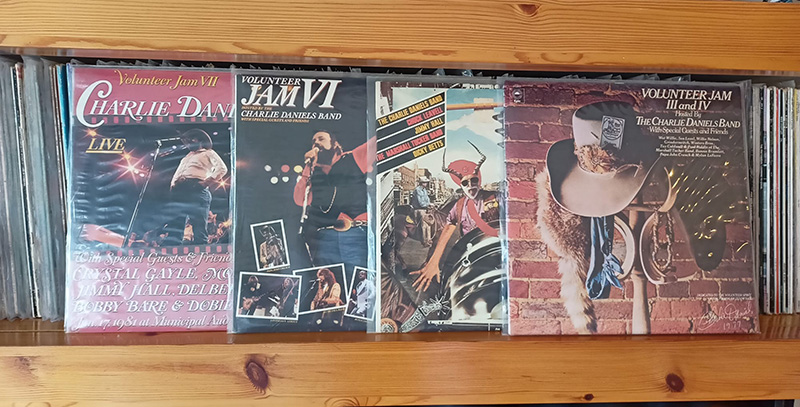
Es en parte a este auténtico sentimiento fraternal que pudieron sobreponerse a verdaderas tragedias que golpearon a implicados, amigos y publico con una inusitada virulencia. Duane Allman, piedra angular del movimiento, fallece en 1971 a la temprana edad de 24 años en un accidente de moto, y un año después es Berry Oakley, alma y motor del grupo que muere a la misma edad en circunstancias parecidas muy cerca del lugar donde Duane perdió la vida. Cuando parecía que la banda se rompería por tal cumulo de desgracias, y en uno de los “tour de force” más increíbles de la historia del Rock, editan en 1973 “Brothers and Sisters”, uno de sus mejores trabajos y el de más éxito.
It’s partly due to this authentic ‘brotherly’ feeling that they were able to overcome real tragedies that struck them, their friends or their audiences, with unusual hostility. In 1971, Duane Allman, the cornerstone of the movement, was killed in a motorcycle accident at only 24 years of age. And only one year later, Berry Oakley, the soul and driving force behind the group, died at the same age in very similar circumstances, near the same place where Duane had previously lost his life. When it seemed that the band had come to an end due to this series of misfortunes, in one of the most incredible “tour de force” in the history of Rock, they released Brothers and Sisters in 1973, one of their best and most successful albums.
El artwork del álbum es toda una declaración de intenciones, con todas las familias reunidas formando una piña en recuerdo a los hermanos caídos. El accidente aéreo de Lynyrd Skynyrd paró la actividad de la banda diez años, hasta que en 1987 se reunieron para girar con el hermano pequeño de Ronnie, Johnny Van Zant como sustituto. Debido a la explosiva repuesta popular en 1991 graban “Lynyrd Skynyrd 1991.”, continuando en activo desde entonces. Y The Marshall Tucker Band, la tercera gran banda del Southern Rock también se tuvo que enfrentar a la muerte cuando en 1980 el coche en que viajaba Tommy Caldwell tuvo un accidente causándole la muerte diez días después. El siguiente disco del grupo, “Dedicated”, es un precioso homenaje al compañero y hermano desaparecido.
The artwork on the album is basically a declaration of intent, with all the families coming together as one, in memory of the fallen brothers. The Lynyrd Skynyrd plane crash brought the band’s activity to a halt for ten years, until they reunited in 1987 to tour with Ronnie’s little brother, Johnny Van Zant as a replacement. Due to the explosive popular response in 1991, they recorded Lynyrd Skynyrd 1991, and have been playing ever since. The Marshall Tucker Band, the third great Southern Rock band, also had to face death, when in 1980, the car in which Tommy Caldwell was traveling in had an accident which led to his death ten days later. The group’s next album, Dedicated was a beautiful tribute to their late partner and brother.
Y es que el concepto de familia es básico para entender la identidad y música sureña, ya que muchos de los integrantes de las grandes (y también de las más pequeñas y anónimas) bandas mantienen lazos de sangre que reforzarán con más intensidad e integridad el espíritu del proyecto que pretenden desarrollar: Gregg y Duane Allman, Toy y Tommy Caldwell, Steve y Cassie Gaines, los tres hermanos Van Zant (Ronnie en Lynyrd Skynyrd,
It’s this concept of family that is fundamental to understanding the identity of Southern music, since many of the members of the great (as well as some of the smallest and most anonymous) bands continue to have blood ties that reinforce the spirit of the projects they are striving to maintain with even more intensity and integrity: Gregg and Duane Allman, Toy and Tommy Caldwell, Steve and Cassie Gaines, the three Van Zant brothers (Ronnie in Lynyrd Skynyrd, Donnie in 38 Special and Johnny, first as a solo artist and later on with Lynyrd Skynyrd),
Donnie en 38 Special y Johnny primero en solitario y posteriormente con Lynyrd Skynyrd), Jimmy, Jack y Donna Hall en Wet Willie o Dennis y Donnie Winters en la Winters Brothers Band son unos pocos ejemplos de como muchos de los grupos se creaban no solo con la participación de amigos y colegas, sino que nacían en las habitaciones o garajes de todo el sur.
and Jimmy, Jack and Donna Hall in Wet Willie or Dennis and Donnie Winters in the Winters Brothers Band are just a few examples of how many of the groups were made up of not only friends and buddies, but also of how the bands were formed, in rooms and garages from all over the South.
También hay que destacar el caso de los hermanos Walden: aunque los dos fundaron Capricorn Phil lideró la compañía en todas sus encarnaciones, mientras que su hermano Alan abandonó pronto el sello para convertirse en manager de Lynyrd Skynyrd en sus inicios y de The Outlaws después.
The case of the Walden brothers cannot be forgotten either. Although both of them founded Capricorn, Phil led the company in all its incarnations, while his brother Alan soon left the label to manage Lynyrd Skynyrd when the band was just starting out, later on moving on to manage The Outlaws.
A principios de los 60’s la música es parte fundamental en la vida de muchos de los jóvenes habitantes del Sur. La irrupción de Elvis y sobre todo la masiva sobreexposición de bandas de la “British Invasion” sacudirá las vidas de estos adolescentes. La popularmente denominada Invasión británica es un nuevo estilo de RnR surgido en el Reino Unido a medidos de esta misma década que introduce la tradición musical sureña a una nueva generación de americanos, electrificando el Blues y el R&B y dando a conocer a muchas de las leyendas de la música negra que hasta entonces eran prácticamente desconocidas para el gran público.
At the beginning of the ‘60s, music was a fundamental part of the life of many young Southerners. When Elvis exploded on the scene, and especially thanks to the massive overexposure of bands from the “British Invasion”, the lives of these teenagers would be forever changed. The “British Invasion” was a new style of Rock&Roll that started out in the UK in the middle of the decade, introducing Southern tradition music to a new generation of Americans, as Blues and R&B were electrified, thus introducing a handful of black music legends that until then had been basically unknown to the general public.
Grupos como The Allman Brothers serán fuertemente influenciados por la primera ola de bandas inglesas en llegar, como los Yardbirds de Eric Clapton, mientras que los más contundentes como Lynyrd Skynyrd aprenderán de combos posteriores y más “duros” como Free o Led Zeppelin. Gracias a sus paisanos británicos muchos estadounidenses descubrirán que la música sureña es sinónimo de “cool”.
Bands like The Allman Brothers would be heavily influenced by the first wave of English bands that arrived, such as Eric Clapton’s Yardbirds, while heavyweights like Lynyrd Skynyrd learned from “heavier” combos that would come on the scene later, like Free or Led Zeppelin. Thanks to the British, many Americans discovered that southern music was actually “cool”.
La edición del primer disco de The Allman Brothers Band en 1969 es el auténtico pilar que define el característico sonido del Southern Rock. Duane Allman, un auténtico visionario, sentía fascinación por la sección de percusión de James Brown, formada por los reyes del “Groove” Clyde Stubblefield y Jabo Starks. Al incorporar dos baterías a su banda consiguió acentuar el sentido rítmico de la música, y al elevar el tempo proporciona a las canciones una mayor intensidad y energía.
The Allman Brothers Band’s debut album in 1969 is the true pillar that defines the characteristic sound of Southern Rock. Duane Allman, a true visionary, was fascinated by James Brown’s percussion section, made up of the kings of “Groove”, Clyde Stubblefield and Jabo Starks. By adding two drummers to his band, he was able to accentuate the rhythmic sense of the music, and by raising the tempo, the songs were even more intense and full of energy.
También redefine los tradicionales roles de guitarrista solista y rítmico: inspirado en los dos colosos del Jazz Miles Davis y John Coltrane (de los cuales era un devoto admirador), los dos guitarristas del grupo se turnan a la hora de realizar solos o llevar el ritmo, e incluso “doblaran” sus instrumentos en muchos momentos interactuando de una forma prodigiosa. Esta particularidad será poco después la marca de la casa de bandas como Lynyrd Skynyrd o The Outlaws, que aumentaran la apuesta integrando un tercer guitarrista, obteniendo un sonido tan rico como completo, en absoluto redundante.
The traditional roles of lead and rhythm guitarists were also redefined. Inspired by jazz giants Miles Davis and John Coltrane (who Duane admired devoutly), the group’s two guitarists took turns performing solos or keeping time, even “overlapping” each other at times remarkably. This would soon become the trademark of bands such as Lynyrd Skynyrd or The Outlaws. Later on, the stakes would be raised even further by bringing in a third guitarist, thus obtaining a sound that was as rich as it was complete, while not being the least bit redundant.
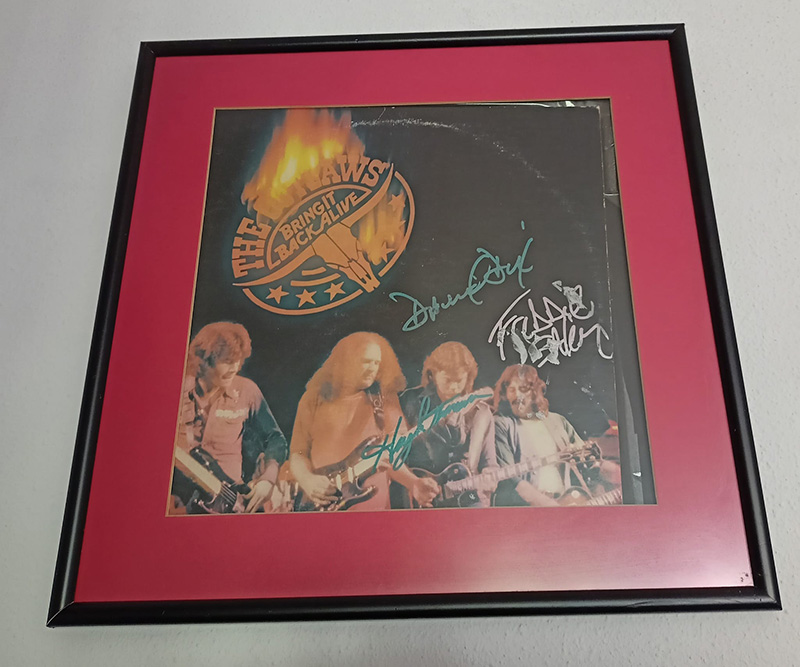
Si bien la espina dorsal de la mayoría de los grupos del movimiento residía en la figura de un cantante con carisma, estelares guitarras y una sólida sección rítmica, la heterogeneidad del movimiento amplió el abanico de posibilidades de forma exponencial: la más común la presencia de los teclados, pero sin olvidar los instrumentos de viento, violín, armónica e incluso la “washboard” (o tabla de lavar) que Jim “Dandy” Mangrum utilizó desde el debut de Black Oak Arkansas en 1971. La riqueza vital del Sur se transmite de forma trascendental a su música y a su gente, una excitante historia que comienza en Nashville a finales de la década de 1940’s : la capital del estado de Tennessee no será solo la cuna del Country, sino que también verá nacer a los hermanos Duane y Gregg Allman, profetas del Southern Rock en una misión divina….
Although the backbone of most groups in this movement was due to a charismatic frontman, some stellar guitars and a solid rhythmic section, the heterogeneity of the movement expanded the range of possibilities exponentially, especially in terms of keyboards, without forgetting the wind instruments, violin, harmonica, and even the washboard that Jim “Dandy” Mangrum used back when Black Oak Arkansas debuted in 1971. The South’s fullness of life is conveyed transcendentally to its music and its people. The story is an exciting one, that dates back to the late 1940s in Nashville. The capital of Tennessee was not only the birthplace of Country, but would also end up being the birthplace of brothers Duane and Gregg Allman, the prophets of Southern Rock who were on a divine mission…
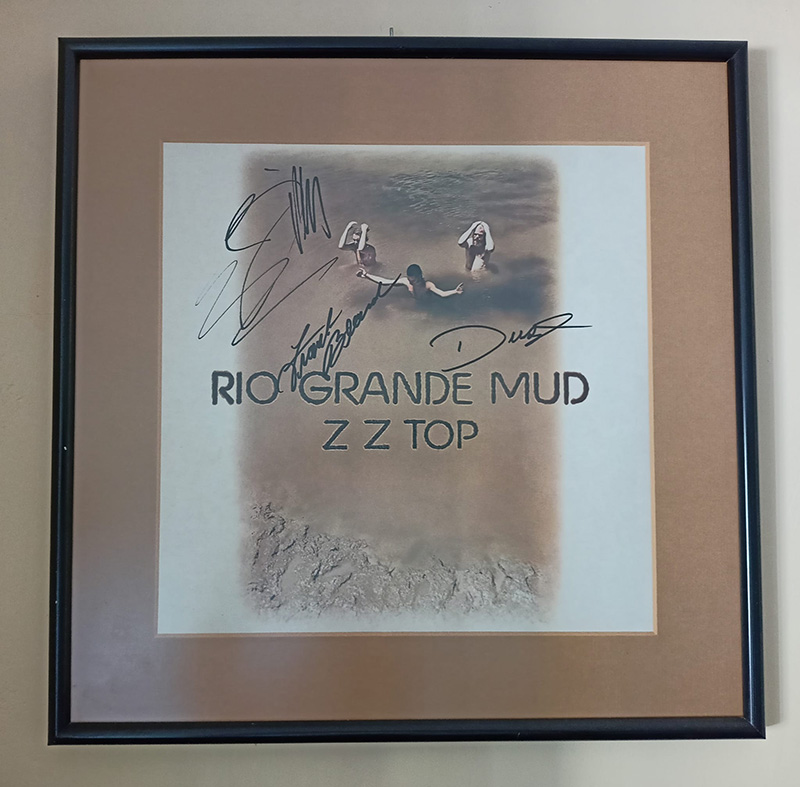
Fotos Albert Barrios.
Translation by Jessica Jacobsen.

